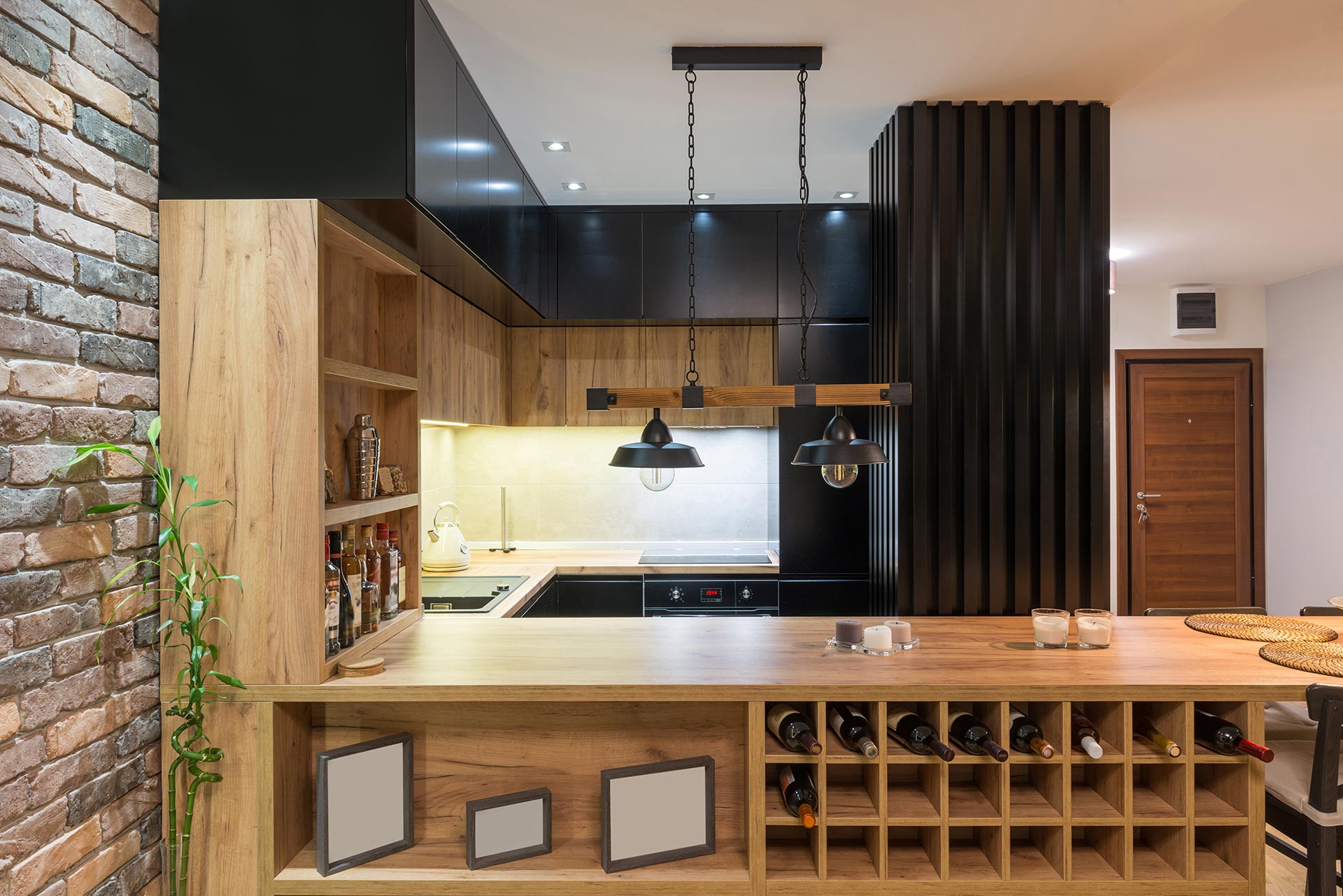
Looking to replace your kitchen countertops for a home improvement project? The variety of kitchen countertops available today means you can find one that fits your style, budget, and functional needs. From luxurious natural stones to versatile engineered materials, each type of kitchen countertop has its own set of benefits and drawbacks.
Here are seven popular kitchen countertop materials to consider for your remodeling project, including their pros and con
Quartz Kitchen Countertops
Quartz kitchen countertops are engineered products made from around 90% quartz particles and 10% other materials like acrylic or epoxy binders. These countertops are highly durable and resilient, offering a natural stone look with several advantages over granite and marble.
Top manufacturers of quartz kitchen countertops, including MSI, Raphael Stone, Cambria, and Silestone, provide a wide range of colors and patterns. Quartz countertops are known for their low maintenance, as they do not require annual sealing. They are nonporous, resistant to scratching and staining, and impervious to heat and acid. The slabs are uniform and free from imperfections, making them a practical choice for many kitchens.
However, quartz kitchen countertops can be expensive and heavy, which may complicate installation.
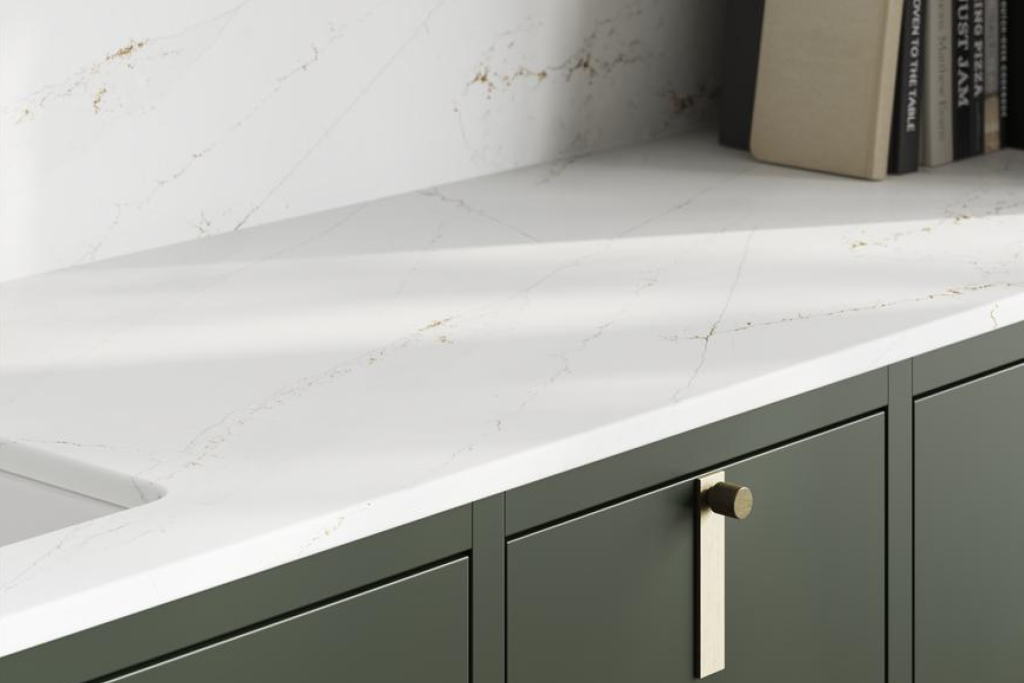
Pros
- Practically maintenance-free with no ongoing sealing involved
- Uniform slabs with no imperfections like natural stone
- Engineered build means kitchen countertop can be custom-built for any shape
- Convincing natural appearance with tons of options
- Resilient to acids, heat, and stains
Cons
- The finished countertops are extremely heavy
- Costs can be expensive compared to other engineered products (between $50 and $200 per square foot)
Top Manufacturers for Exquisite Quartz Countertops
- Caesarstone: A leading provider of premium quartz surfaces, Caesarstone offers a wide range of beautifully designed countertops known for their durability and exquisite aesthetic appeal.
- Silestone: Known for its innovative and high-quality quartz products, Silestone is a popular choice for homeowners seeking elegant and low-maintenance countertop solutions that exude both style and functionality.
- Cambria: With a focus on creating stunning and sustainable quartz surfaces, Cambria is renowned for its diverse selection of countertop designs that seamlessly blend durability, beauty, and environmental consciousness.
Granite Kitchen Countertops
Granite kitchen countertops are an excellent choice for those who prefer natural stone. They bring upscale elegance to any kitchen, available in a variety of colors and often at a more affordable price point compared to some engineered options.
Granite countertops are cut into large slabs with minimal seams and are treated with a sealer to enhance stain resistance. When properly treated, granite is virtually maintenance-free. It is heat-resistant, incredibly strong, and available in nearly 3,000 colors. However, granite can be expensive, slabs may have imperfections, and it can crack if improperly installed or stressed. Additionally, granite can dull knives and is porous without proper sealing.
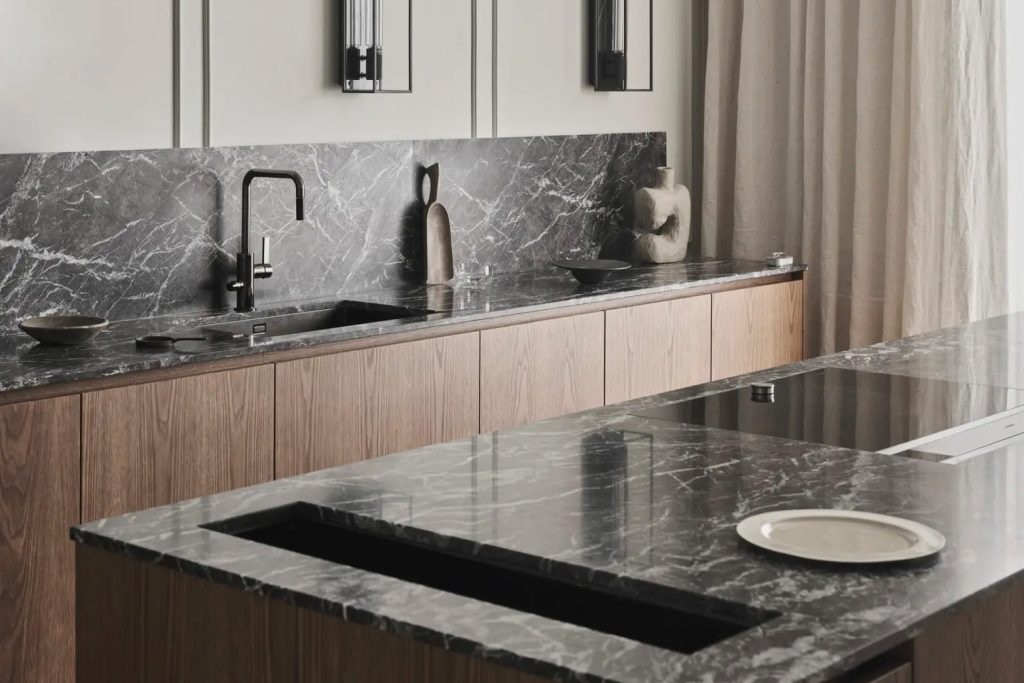
Pros
- Relatively resilient to heat
- Can be maintenance-free for the most part when treated properly during installation
- Many styles and color options are available
- Durable material that can last for the lifetime of the home with proper care
- This home improvement instantly ups a home’s real estate value
Cons
- Most expensive kitchen countertop option (Up to $250 per square foot)
- Granite slabs may have visible imperfections
- Cracks when mishandled or stressed
- Can be porous without the right sealer
Top Local Manufacturers for Premium Granite Countertops in Los Angeles
- MSI Surfaces: Offering an extensive selection of premium granite countertops, MSI Surfaces is known for its diverse range of colors and patterns that cater to various design preferences and interior styles.
- Daltile: Recognized for its superior craftsmanship and exquisite natural stone products, Daltile provides a range of granite countertops known for their durability, elegance, and timeless appeal, adding a touch of sophistication to any kitchen.
- Triton Stone Group: Specializing in top-tier granite countertops, Triton Stone Group is esteemed for its attention to detail and commitment to providing homeowners with luxurious and durable granite surfaces that enhance the visual appeal of any space.
- California Crafted Marble: With a focus on delivering exceptional granite products, California Crafted Marble offers a diverse collection of granite countertops known for their resilience, aesthetic versatility, and enduring char
Marble Kitchen Countertops
Marble kitchen countertops are renowned for their luxurious appearance and unique veining. Each marble slab is one-of-a-kind, offering a distinctive look for any kitchen. However, marble is generally less durable compared to other stones.
Marble countertops are often used for kitchen islands or countertops that are meant to stand out. They are elegant, heat-resistant, and waterproof. However, marble is prone to staining and scratching, and repairs can be challenging. Its high cost also makes it less common for all kitchen countertops.

Pros
- Resilient to both water and heat
- Instantly elevates a home’s real estate value
- Beautiful stone with natural veins and hue variances
Cons
- One of the more costly kitchen countertop options ($100 per square foot or more)
- Prone to scratching and marring
- Difficult to repair after the damage is sustained
- Stains are common unless the stone is properly sealed
Leading Manufacturers of High-Quality Marble Countertops
- Cumar Marble and Granite: With a focus on exquisite natural stone products, Cumar Marble and Granite is known for its premium marble countertops that exude elegance, sophistication, and timeless beauty, adding a touch of luxury to any kitchen space.
- Pacific Shore Stones: Recognized for its superior marble products, Pacific Shore Stones offers a diverse range of marble countertops known for their stunning veining patterns, durability, and refined aesthetic, creating a luxurious and visually captivating ambiance.
- AG&M – Architectural Granite & Marble: Specializing in premium marble countertops, AG&M is esteemed for its meticulous craftsmanship and commitment to providing homeowners with sophisticated and durable marble surfaces that enhance the overall elegance and charm of their kitchens.
- Marble Unlimited Inc.: With a focus on delivering top-tier marble products, Marble Unlimited Inc. offers an extensive selection of marble countertops known for their timeless appeal, versatility, and superior quality, making them an ideal choice for homeowners seeking both luxury and functionality.
Ceramic Tile Kitchen Countertops
Ceramic tile countertops are known for their durability and affordability. They are suitable for a variety of applications, including backsplashes, islands, and eat-at counters. It’s crucial to use tiles designed for countertops to avoid cracking.
Ceramic tile offers a wide range of styles and colors, making it possible to create a unique kitchen design. Despite their less popular status today, ceramic tiles are still practical due to their geometric appeal and low maintenance.
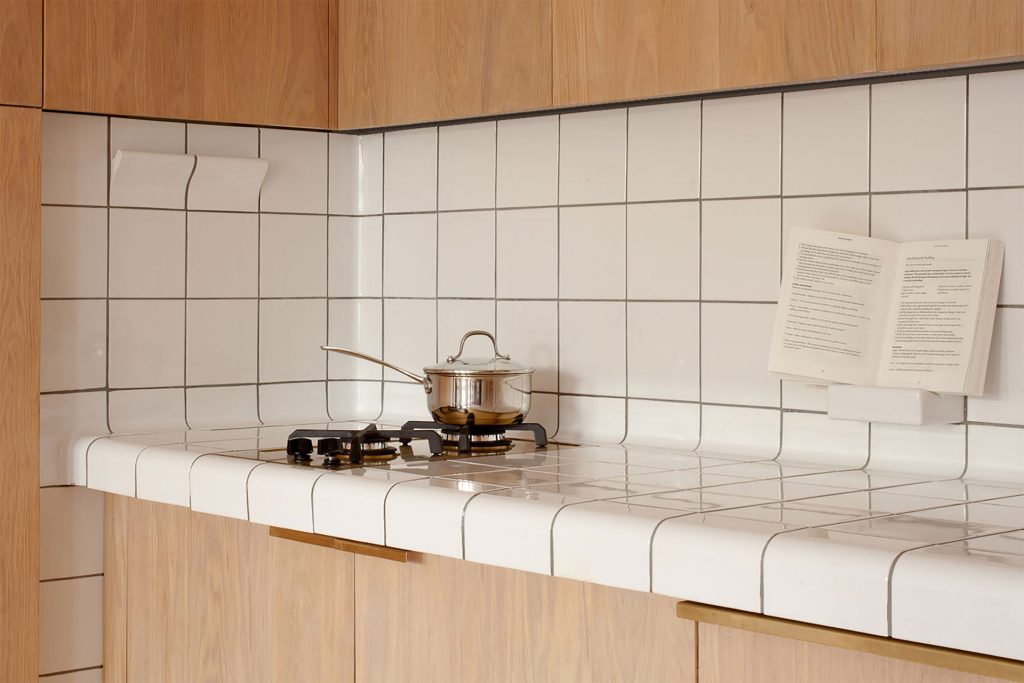
Pros
- Highly affordable home improvement in comparison to something like quartz or granite
- Easy to maintain and keep clean
- Stands up well to heat exposure and moisture
- A large array of different tile styles to choose from to go with any design idea
Cons
- Tiles can crack or break with direct impact
- Grout between the tiles can stain and potentially be hard to clean
- Not the most value-inducing kitchen countertop option when it comes to home value
Discover the Leading Manufacturers of High-Quality Ceramic Tiles
- Dal-Tile: With a focus on innovative ceramic tile solutions, Dal-Tile offers a wide range of ceramic tile products known for their durability, versatility, and aesthetic appeal, providing homeowners with diverse options to enhance the visual appeal of their spaces.
- Bedrosians Tile & Stone: Recognized for its extensive collection of ceramic tiles, Bedrosians Tile & Stone provides homeowners with a variety of stylish and durable ceramic tile options that add a touch of elegance and sophistication to any room.
- Emser Tile: Specializing in premium ceramic tile products, Emser Tile is esteemed for its commitment to delivering high-quality and beautifully designed ceramic tiles that offer both functionality and aesthetic versatility, allowing homeowners to create stunning and enduring interior spaces.
- Arto Brick & Tile: With a focus on handcrafted ceramic tiles, Arto Brick & Tile offers a range of unique and artisanal ceramic tile options known for their distinctive textures, colors, and designs, providing homeowners with the opportunity to add character and charm to their living spaces.
Solid-Surface Kitchen Countertops
Solid-surface kitchen countertops, made from acrylic particles and resins, have been a popular choice for nearly 50 years. Brands like Avonite, Corian, and Swanstone offer these versatile materials.
Solid-surface countertops are low maintenance, available in various colors and patterns, and easy to repair. They are resistant to stains and scratches, with seamless joints that are ideal for large surfaces. Solid-surface sinks can be integrated with the countertops for a cohesive look.
However, they can be moderately expensive and are susceptible to damage from hot pans.
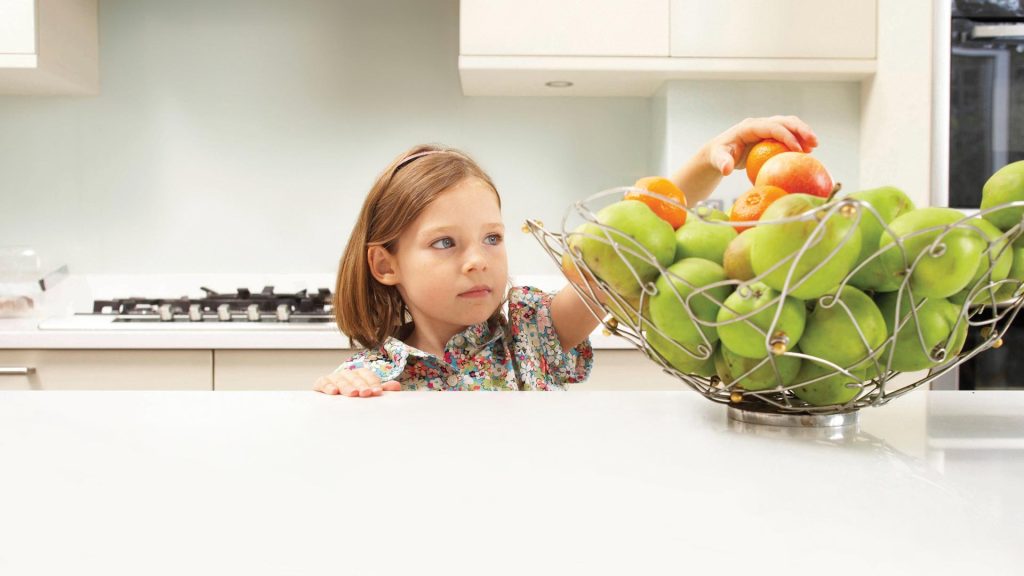
Pros
- Available in just about any color or pattern you could desire
- Can be made with an integrated sink for a one-piece unit
- Resilient to stains
- Easier to repair after damage with s bit of sanding
Cons
- This kitchen countertop material cannot handle heat from hot pans
- The material is moderately expensive compared to some other mid-tier countertop materials (up to $50 per square foot)
- Not as durable as engineered or natural stone
Top Local Manufacturers of High-Quality Solid Surface Products
- Corian® Design: With a focus on innovative solid surface solutions, Corian® Design offers a wide range of durable and versatile solid surface products known for their seamless designs, vibrant colors, and superior performance, providing homeowners with elegant and functional countertop options.
- Meganite Solid Surface: Recognized for its commitment to quality and craftsmanship, Meganite Solid Surface provides homeowners with a diverse selection of solid surface products known for their durability, stain resistance, and sleek aesthetic, making them an ideal choice for modern and sophisticated interior designs.
- Hanex Solid Surfaces: Specializing in premium solid surface materials, Hanex Solid Surfaces is esteemed for its comprehensive range of solid surface products known for their resilience, hygienic properties, and contemporary designs, offering homeowners a versatile and durable solution for their countertop needs.
- LG Hausys HI-MACS®: With a focus on delivering premium solid surface solutions, LG Hausys HI-MACS® offers an extensive selection of solid surface products known for their seamless integration, elegance, and resistance to stains and scratches, providing homeowners with a practical and visually appealing option for their countertop surfaces.
Laminate Kitchen Countertops
Plastic laminate kitchen countertops, often referred to by the brand name Formica, are surprisingly durable and affordable. Made from kraft paper and resins, these countertops are easy to clean and come in a variety of styles.
Laminate countertops are easy to maintain and cost-effective. They are available in many designs, making them a versatile choice. However, they offer low resale value, visible seams, and can be scratched or chipped. Repairs are nearly impossible, and they are not heat-resistant.
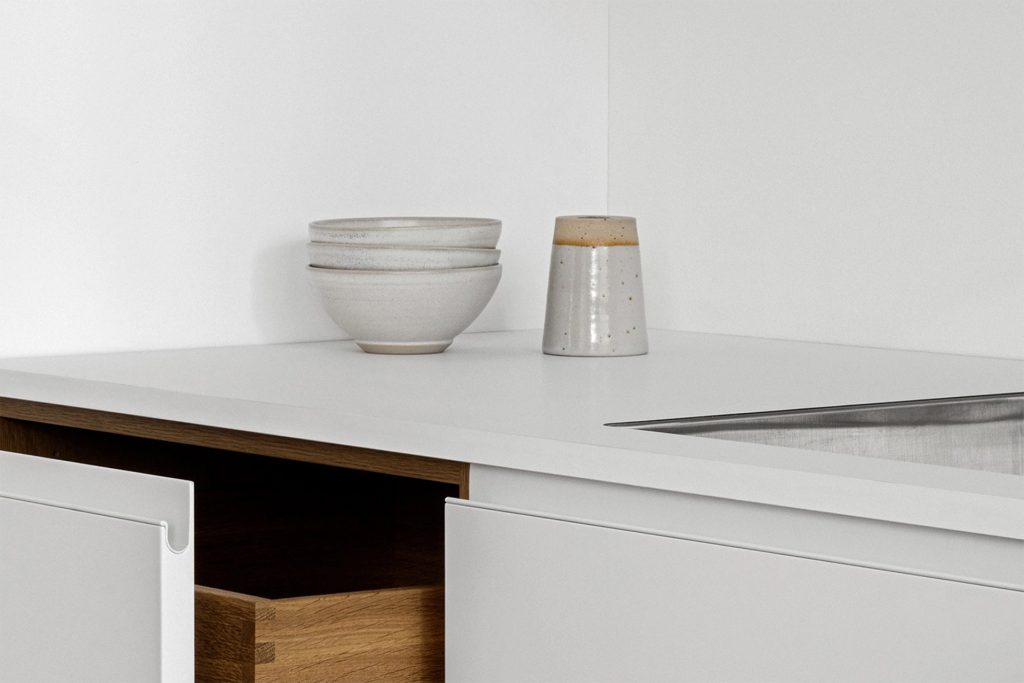
Pros
- Literally, thousands of unique designs are available
- One of the most inexpensive kitchen countertop options
- Relatively easy to maintain
Cons
- Material is not resilient; prone to scratches, chips, and even stains
- Seams in the countertop will be visible with larger countertops
- Very difficult to repair without completely replacing the laminate cover
- Often deemed as a low-quality countertop option
Leading Manufacturers of High-Quality Laminate Countertops
- Wilsonart: With a focus on innovative laminate solutions, Wilsonart offers a wide range of durable and visually appealing laminate countertops known for their versatility, affordability, and stylish designs, providing homeowners with an array of options to enhance their interior spaces.
- Formica: Recognized for its commitment to quality and craftsmanship, Formica provides homeowners with a diverse selection of laminate countertops known for their durability, easy maintenance, and extensive range of colors and patterns, making them an ideal choice for various kitchen and bathroom designs.
- Pionite: Specializing in premium laminate materials, Pionite offers a comprehensive range of laminate countertops known for their resilience, aesthetic appeal, and cost-effectiveness, providing homeowners with a practical and durable solution for their countertop needs.
Wooden or Butcher Block Kitchen Countertops
Wooden or butcher block kitchen countertops offer a warm, classic aesthetic and functional workspace. They are available in a variety of wood types, including maple, oak, and walnut.
Butcher block countertops are excellent for cooking and food prep due to their natural antibacterial properties. They can be sanded and refinished to remove scratches and dents, and they offer a unique look that complements many kitchen styles. However, they require regular oiling to maintain their appearance and prevent damage from moisture. They can be prone to scratches and dents, and their surface may not be as resistant to stains and heat as some other materials..
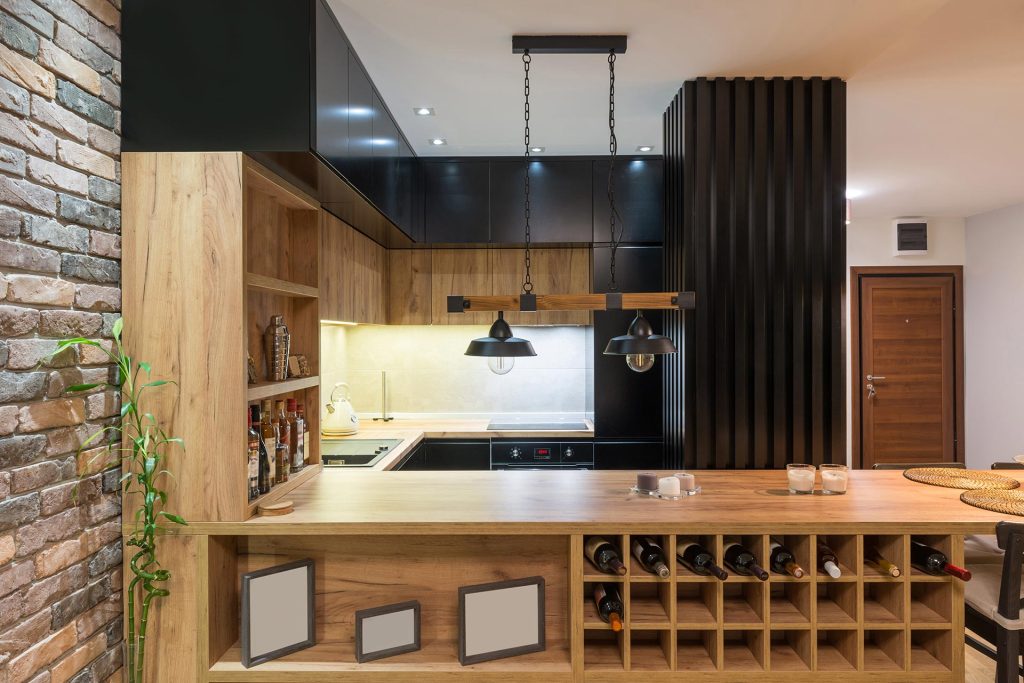
Pros
- Extremely durable when properly sealed and taken care of
- Easier to repair with sanding and refinishing
- Provides a nice traditional look for the kitchen
- Fairly easy to maintain and clean
Cons
- Can be an expensive kitchen countertop option
- Surface of wood can be prone to scratches, marring, and stains
- Wood is porous and prone to bacteria if not sealed properly
- Higher-maintenance option; needs ongoing resealing to protect the wood
Top Artisans Crafting High-Quality Wooden Block Countertops
- Butcher Block Co.: With a focus on premium wooden block solutions, Butcher Block Co. offers a wide range of durable and visually appealing wooden block countertops known for their natural beauty, warmth, and functionality, providing homeowners with a classic and timeless option for their kitchen surfaces.
- Hardwood Lumber Company: Recognized for its commitment to quality and craftsmanship, Hardwood Lumber Company provides homeowners with a diverse selection of wooden block countertops known for their durability, versatility, and stunning wood grain patterns, making them an ideal choice for creating a rustic and inviting kitchen space.
- John Boos & Co.: With a focus on delivering premium wooden block products, John Boos & Co. offers an extensive selection of wooden block countertops known for their longevity, resistance to cuts and scratches, and natural appeal, allowing homeowners to create a warm and inviting culinary environment.
Choosing the Right Kitchen Countertop Material
Ready to discuss kitchen countertop options for your kitchen remodeling project? Reach out to get a conversation started about your ideas of the perfect kitchen and get a free estimate!